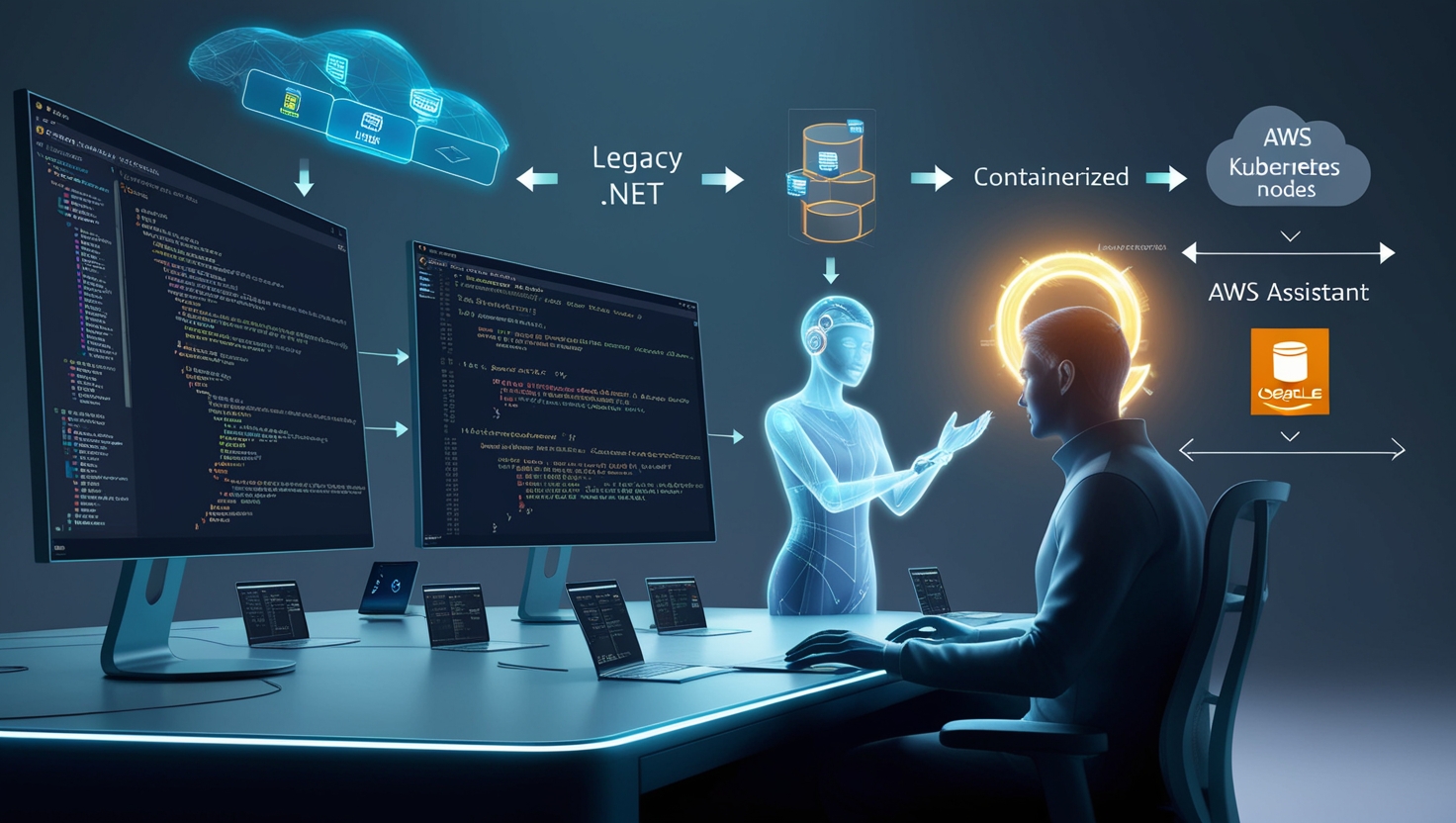
The Shift Towards Assisted Coding
The world of software development is rapidly evolving, with developers increasingly relying on AI-powered tools to streamline workflows, reduce manual effort, and accelerate project delivery. Assisted coding tools are becoming indispensable in modern software engineering, enabling teams to tackle complex challenges with greater efficiency and precision.
In this era of digital transformation, legacy systems—particularly those built on older frameworks like ASP.NET—pose significant challenges. Modernizing these systems requires not only technical expertise but also innovative tools that can simplify the process. Enter Amazon Q, AWS’s Generative AI-powered conversational assistant, which is designed not only to build cloud native AWS applications but is also proving to be a game-changer in the modernization of legacy Windows workloads.
Strengths of Amazon Q in Modernization
Amazon Q stands out as a powerful tool for modernizing legacy systems, thanks to its ability to provide actionable insights, automate repetitive tasks, and guide developers through complex technical challenges. Its strengths lie in:
- Intelligent Recommendations: Offering tailored suggestions for containerization, dependency management, and deployment strategies.
- Seamless Integration: Working effortlessly with AWS services like EKS, making it an ideal choice for cloud migrations.
- Contextual Understanding: Interpreting legacy codebases and providing solutions that align with the existing architecture.
These capabilities make Amazon Q an invaluable partner for teams looking to modernize legacy workloads without compromising on stability or performance.
Case Study: Modernizing Legacy ASP.NET Applications with Amazon Q
In a recent project, we partnered with a leading financial services provider to modernize their legacy ASP.NET applications by containerizing and migrating them to AWS Elastic Kubernetes Service (EKS). Amazon Q played a pivotal role in overcoming the challenges associated with this transformation. Here are three key highlights of how Amazon Q contributed to the project’s success:
- Simplifying Containerization of Legacy ASP.NET Applications
Legacy ASP.NET applications, built on the .NET Framework, are not inherently designed for containerization. Amazon Q provided step-by-step guidance on how to containerize these applications effectively. As a first but vital step, it recommended using a Windows container image as the base image and ensured compatibility with Internet Information Services (IIS), a critical component of the legacy applications. By automating much of the containerization process, Amazon Q significantly reduced the time and effort required to prepare the applications for migration.
- Resolving Complex Dependency Challenges
One of the major hurdles in the project was managing dependencies like the Oracle Client, which was essential for the application’s functionality. Amazon Q provided detailed instructions on:
- Installing the Oracle Client within the container.
- Handling scenarios where both 32-bit and 64-bit Oracle Client versions were required.
- Configuring IIS to accommodate these dependencies seamlessly.
This level of granular guidance ensured that the applications ran smoothly in the new containerized environment.
- Streamlining Build and Deployment Pipelines
Amazon Q also played a crucial role in optimizing the build and deployment process. It helped the team determine whether the applications could be built using a standard pipeline or required additional steps. For applications lacking .csprojg and .sln files, Amazon Q suggested building them using Visual Studio, while the Dockerfile handled the publishing and deployment processes. This approach minimized manual intervention and ensured a smooth transition to AWS EKS.
Final Thoughts
Amazon Q and Q Transform (Currently in Preview) has emerged as a go-to tool for modernizing legacy Windows workloads, as demonstrated by its pivotal role in the successful migration of legacy ASP.NET applications to AWS EKS. By simplifying containerization, resolving complex dependencies, and streamlining build pipelines, Amazon Q enabled us to deliver a robust and scalable solution.
As organizations continue to embrace cloud technologies, tools like Amazon Q will play an increasingly critical role in bridging the gap between legacy systems and modern infrastructure.
Key Takeaways:
- Amazon Q is a powerful ally for modernizing legacy Windows workloads.
- Its intelligent recommendations and contextual understanding simplify complex challenges.
- By leveraging Amazon Q, teams can accelerate modernization efforts while maintaining stability and performance.






